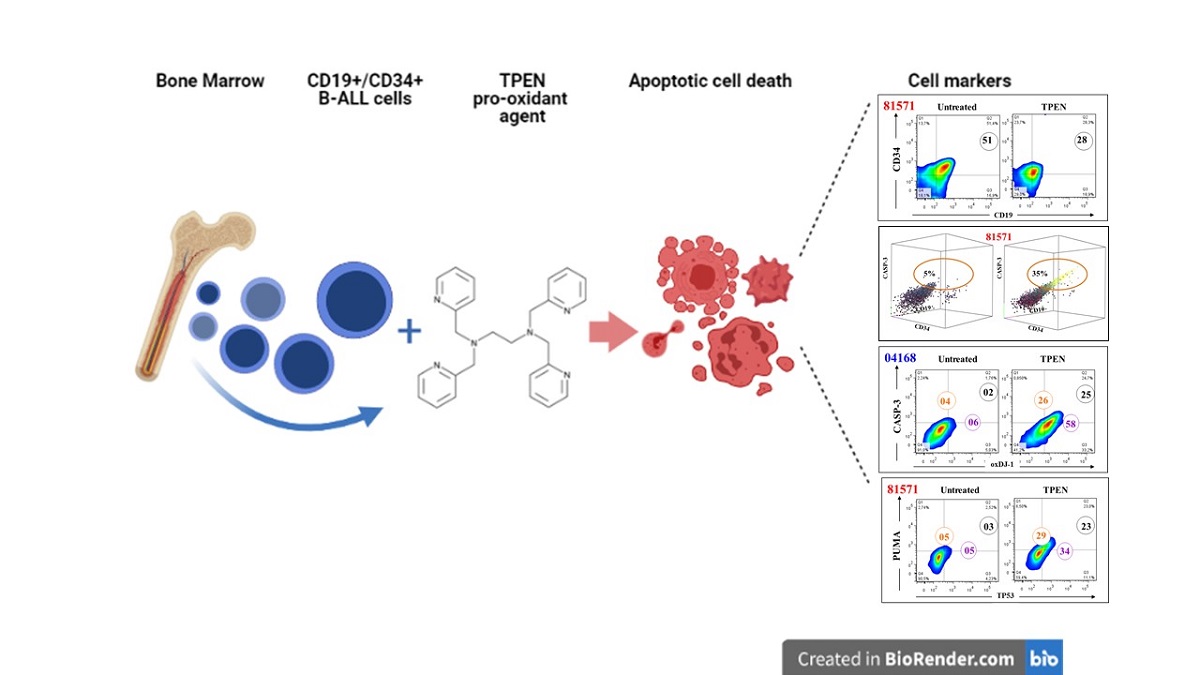B-acute lymphoblastic leukemia (B-ALL) is a hematologic disorder characterized by abnormal proliferation and accumulation of immature B-lymphoblast arrested at various differentiation stages. Despite some advances in treatment, there is still an important percentage of pediatric patients with precursor-B ALL who relapsed. Therefore, alternative therapies are needed to improve cure rates for pediatric patients. TPEN is a pro-oxidant agent capable of selectively inducing apoptosis in leukemia cells. Consequently, TPEN has been suggested as a potential agent for oxidative therapy. However, it is not yet known whether TPEN can selectively destroy leukemia cells in a more disease-like milieu e.g., bloodstream and bone marrow (BM) in vivo. In this investigation, we report for the first time that TPEN significantly induces apoptosis in CD34+/CD19+ cells from whole bone marrow de novo B-ALL (n=5) and refractory B-ALL (n=6) patients by oxidative stress (OS, n=8). We found that TPEN significantly increased not only positive cell counts for the oxidation of the stress sensor protein DJ-1 as a sign of the formation of H2O2, but also significantly increased positive cell counts for the proapoptotic protein TP53, PUMA, and CASPASE-3 as indicative of apoptosis in B-ALL cells irrespective of diagnostic status (de novo or refractory) and sex. Understanding the TPEN-induced cell death in leukemia cells provides insight into more effective therapeutic prooxidant-inducing anticancer agents.

